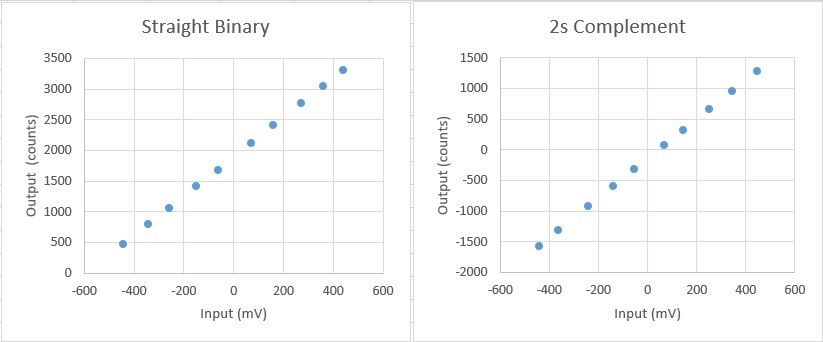We use CMOS-Mode output of this 12-bit ADC (ADS62P24) and configure the ADC using its serial interface to produce counts data in 2s-complement format.
For years, we have used this ADC on a board without changes to the board design and without changes to the firmware that reads counts data from the ADC.
However, a recent build of the board produces counts data (from the ADC) that indicates sign of the voltage input to the ADC is reversed. For example, on previous boards, +100mV input to the ADC produced a counts output of 819 counts. However, on the current board, +100mV input to ADC produces a counts output of 3276 (or -819).
Any ideas what could be causing the sign reversal?


